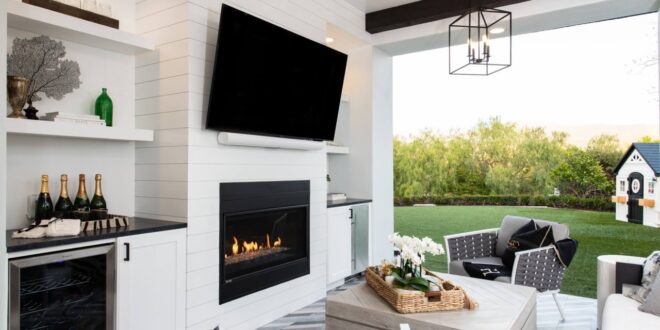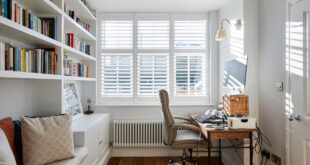body { font-family: Arial, sans-serif; line-height: 1.6; }
h2 { color: #333; margin-top: 2em; }
h3 { color: #666; margin-top: 1.5em; }
p { margin-bottom: 1em; }
ul { margin-bottom: 1em; padding-left: 20px; }
li { margin-bottom: 0.5em; }
The Allure of Indoor-Outdoor Living
Imagine stepping from your cozy living room directly into a sun-drenched patio, the gentle breeze carrying the scent of blooming flowers. That’s the magic of indoor-outdoor living. It’s about blurring the lines between your interior space and the natural world, creating a harmonious and fluid environment that enhances your lifestyle.
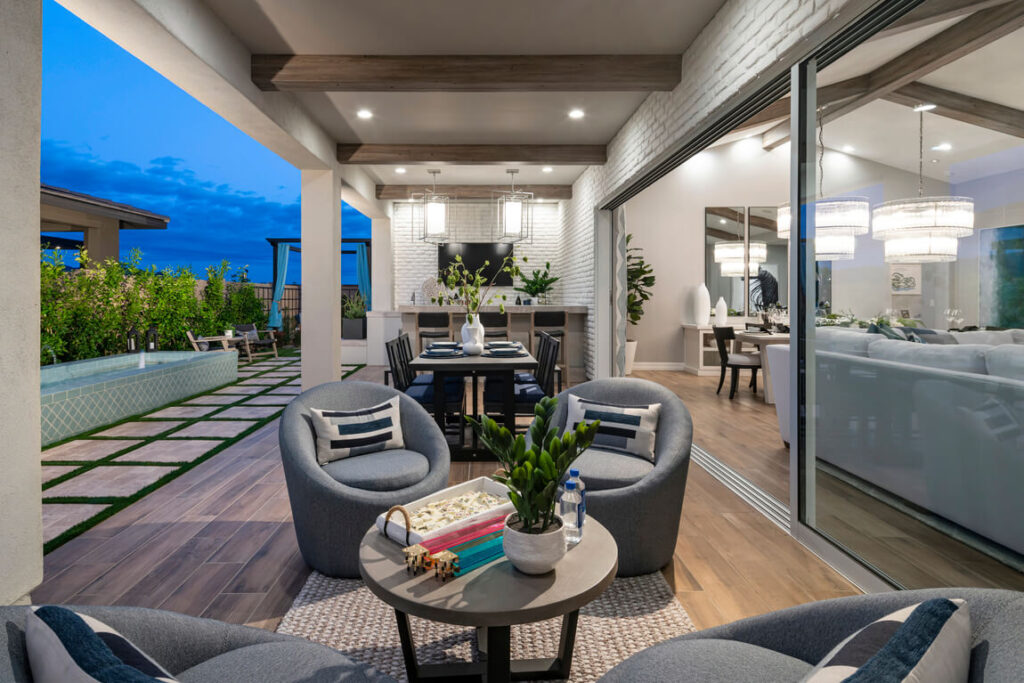
In today’s fast-paced world, the desire to reconnect with nature is stronger than ever. An indoor-outdoor living room allows you to do just that, providing a sanctuary where you can relax, entertain, and enjoy the beauty of your surroundings. This design trend isn’t just about aesthetics; it’s about creating a space that promotes well-being and fosters a deeper connection with the environment.
But achieving a truly seamless indoor-outdoor flow requires careful planning and execution. It’s not simply about opening a door; it’s about creating a cohesive design that integrates the interior and exterior spaces into a single, unified whole. Let’s delve into the key elements that contribute to a successful indoor-outdoor living room flow.
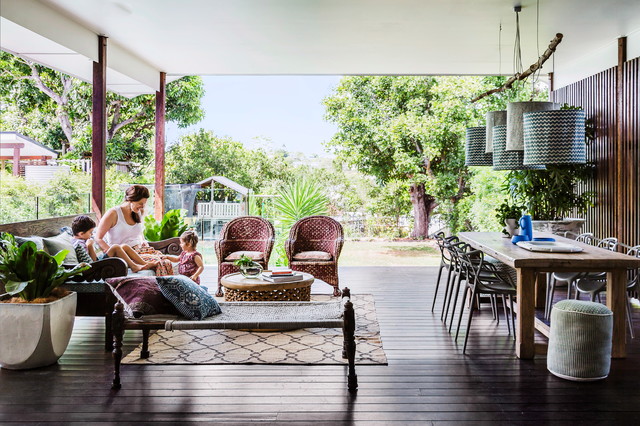
Planning Your Indoor-Outdoor Space: Key Considerations
1. Defining Your Needs and Lifestyle
Before you even start thinking about furniture or landscaping, it’s crucial to define your needs and lifestyle. How do you envision using your indoor-outdoor space? Will it be primarily for relaxation, entertaining, dining, or a combination of these activities?

Consider the size of your family, your entertaining habits, and your personal preferences. Do you enjoy hosting large gatherings, or do you prefer intimate gatherings with close friends? Are you an avid gardener who wants to incorporate plants into your design, or do you prefer a low-maintenance outdoor space?
Answering these questions will help you determine the size and layout of your indoor-outdoor living room, as well as the types of furniture and features you’ll need to create a functional and enjoyable space. For example, if you plan on hosting frequent outdoor dinners, you’ll need to ensure you have ample seating and a suitable dining area.
2. Analyzing Your Existing Space
Take a close look at your existing indoor and outdoor spaces. Consider the orientation of your house, the amount of sunlight your outdoor area receives, and the prevailing wind patterns. These factors will influence your design choices and help you create a space that is comfortable and inviting year-round.
Pay attention to the existing architectural features of your house, such as windows, doors, and walls. Think about how you can integrate these features into your indoor-outdoor design. For example, you might consider replacing a small window with a large sliding glass door to create a more seamless transition between the two spaces.
Also, assess the condition of your outdoor space. Is it level and well-drained? Are there any existing landscaping features that you want to incorporate into your design? Addressing these issues early on will save you time and money in the long run.
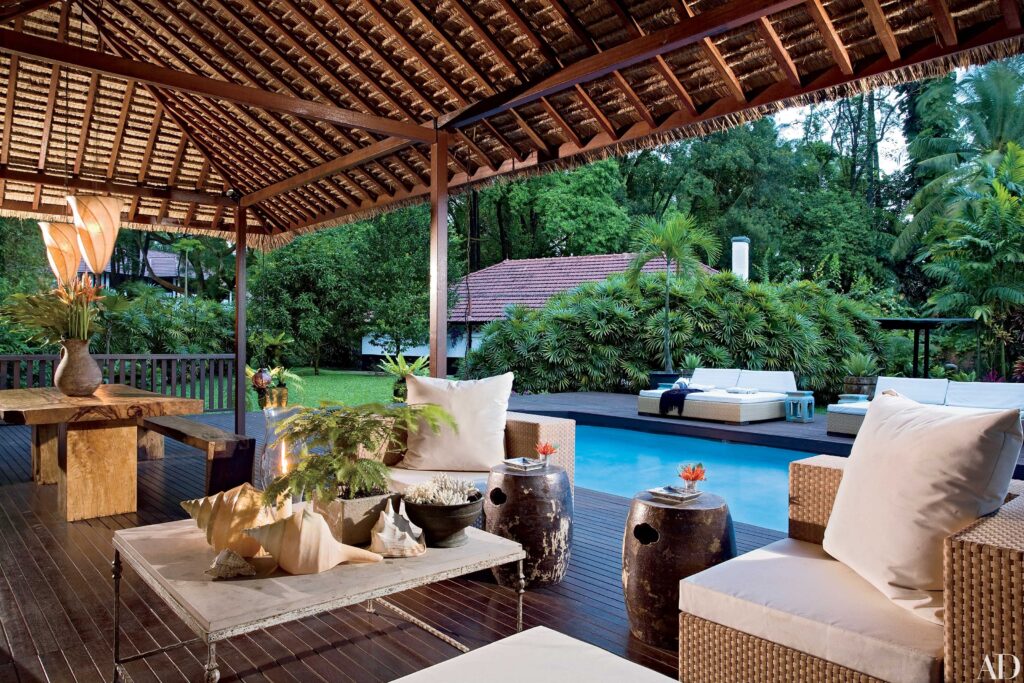
3. Considering Climate and Weather Conditions
Climate plays a crucial role in designing a successful indoor-outdoor living room. If you live in a region with hot summers and cold winters, you’ll need to consider ways to mitigate the effects of these extreme temperatures.
For example, you might install retractable awnings or pergolas to provide shade during the summer months, and outdoor heaters or fire pits to keep you warm during the winter. You should also choose durable, weather-resistant materials for your outdoor furniture and flooring.
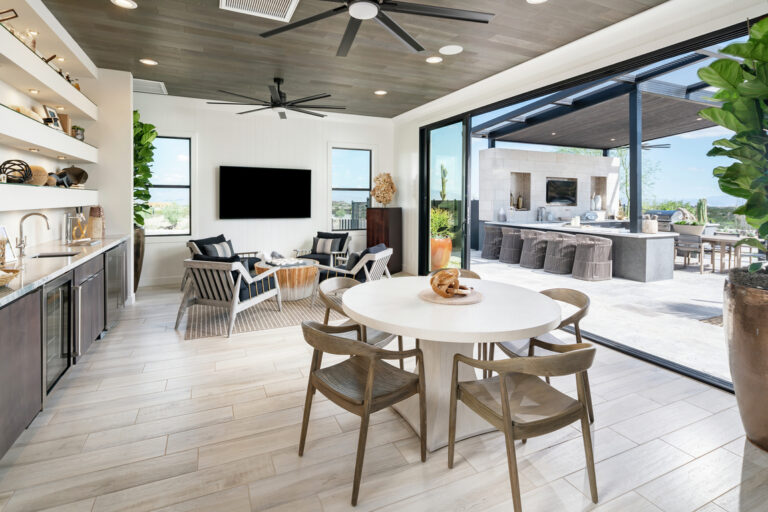
In areas with frequent rainfall, consider installing a covered patio or porch to protect your outdoor space from the elements. You might also choose plants that are drought-tolerant or that thrive in wet conditions.
4. Budgeting for Your Project
Creating an indoor-outdoor living room can be a significant investment, so it’s important to establish a budget early on. Consider all the costs involved, including design fees, construction costs, materials, furniture, and landscaping.
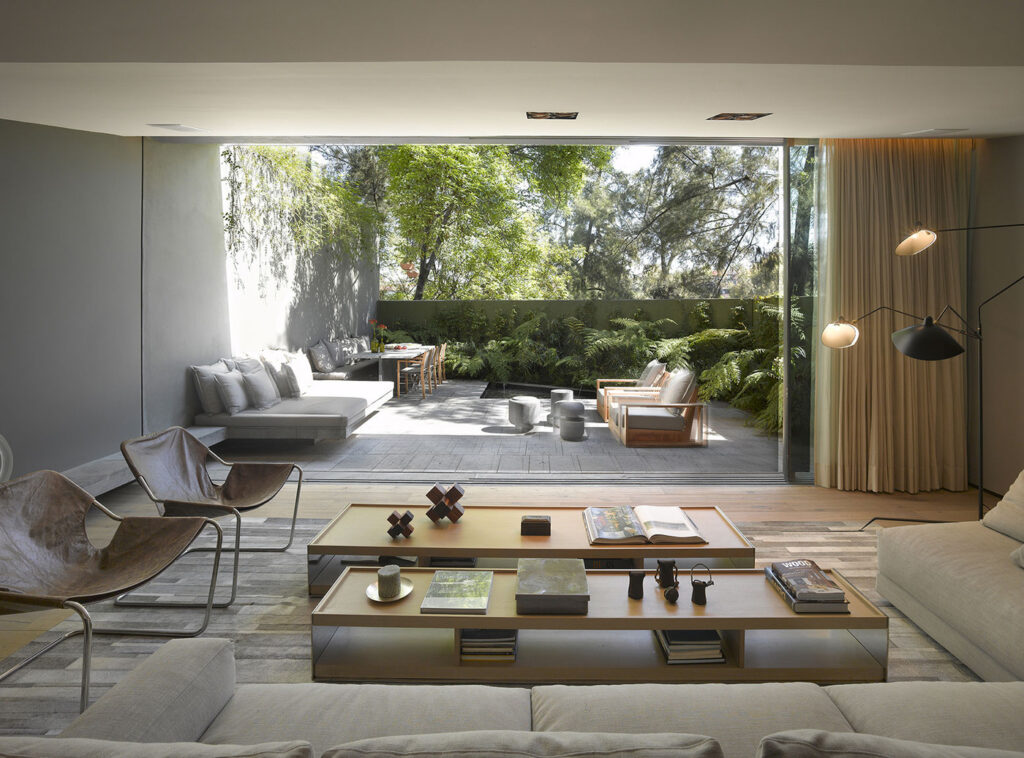
Be realistic about what you can afford, and prioritize the features that are most important to you. You might be able to save money by doing some of the work yourself, such as painting or landscaping. However, it’s important to hire qualified professionals for any structural work or electrical installations.
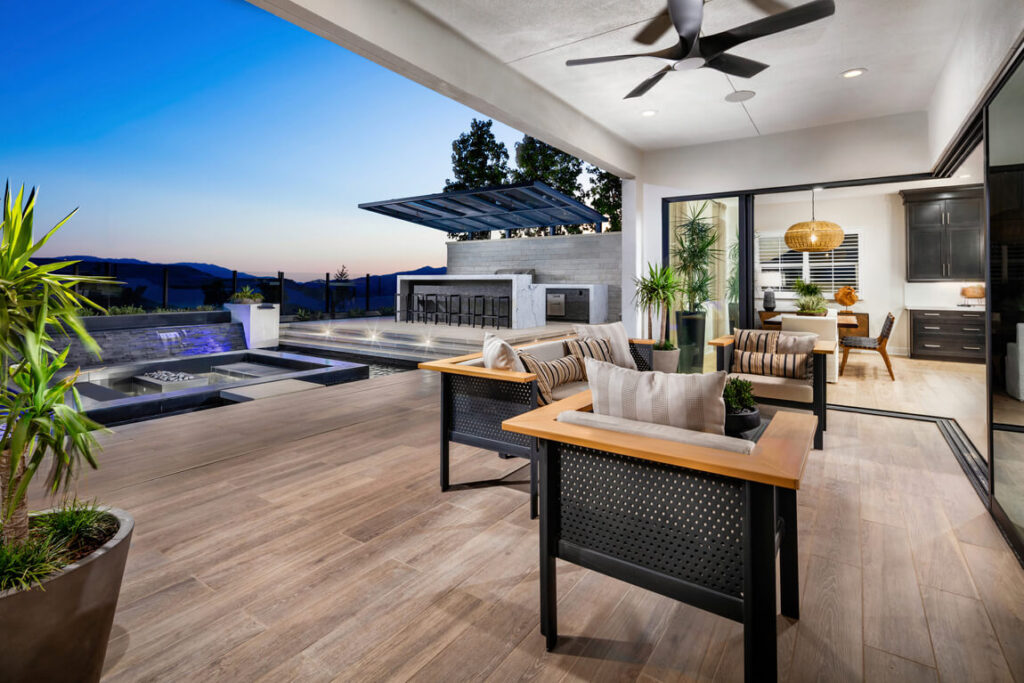
Don’t be afraid to shop around and compare prices from different contractors and suppliers. You can also look for sales and discounts on furniture and materials. With careful planning and budgeting, you can create a stunning indoor-outdoor living room without breaking the bank.
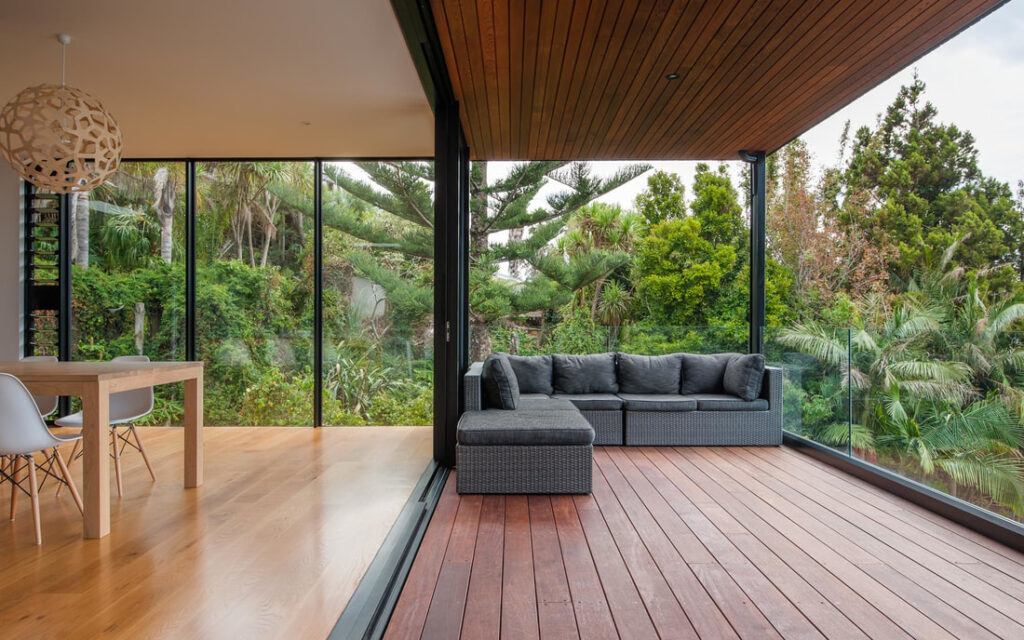
Creating a Seamless Transition: Design Elements
1. Flooring: Bridging the Gap
Flooring is a key element in creating a seamless transition between your indoor and outdoor spaces. The goal is to choose materials that are both aesthetically pleasing and functional, and that create a visual connection between the two areas.
One popular option is to use the same flooring material both indoors and outdoors. This creates a sense of continuity and helps to blur the lines between the two spaces. However, it’s important to choose a material that is durable enough to withstand the elements, such as concrete, stone, or tile.
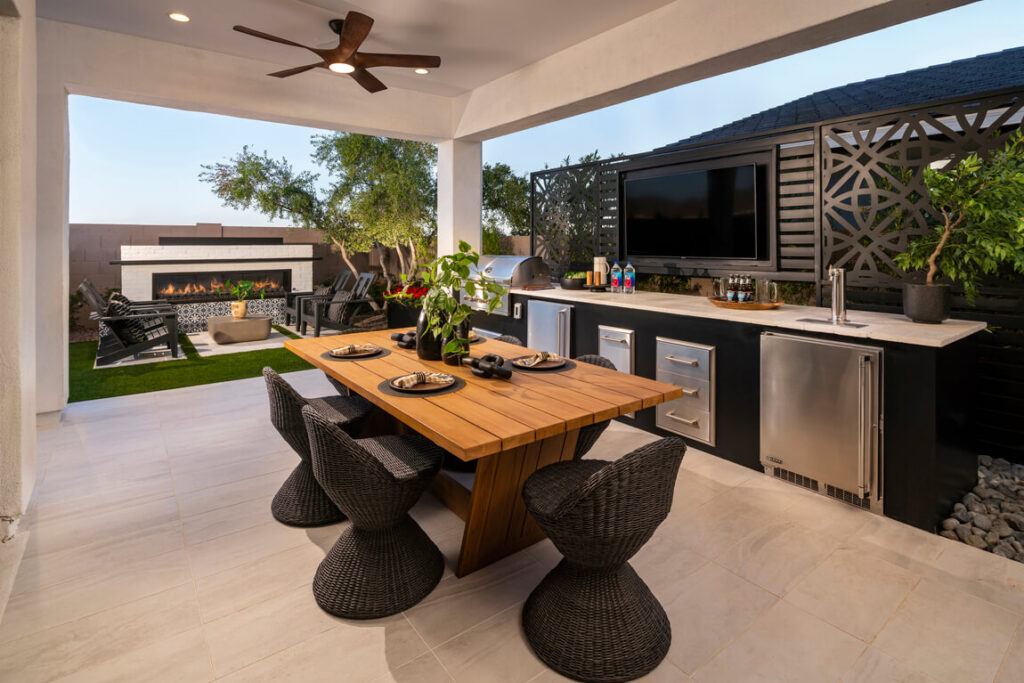
Another option is to use complementary flooring materials that share a similar color palette or texture. For example, you might use hardwood flooring indoors and a similar-toned composite decking outdoors. This creates a visual connection without being too matchy-matchy.
Consider the slip resistance of your outdoor flooring, especially if you have children or pets. You might also want to choose a material that is easy to clean and maintain.
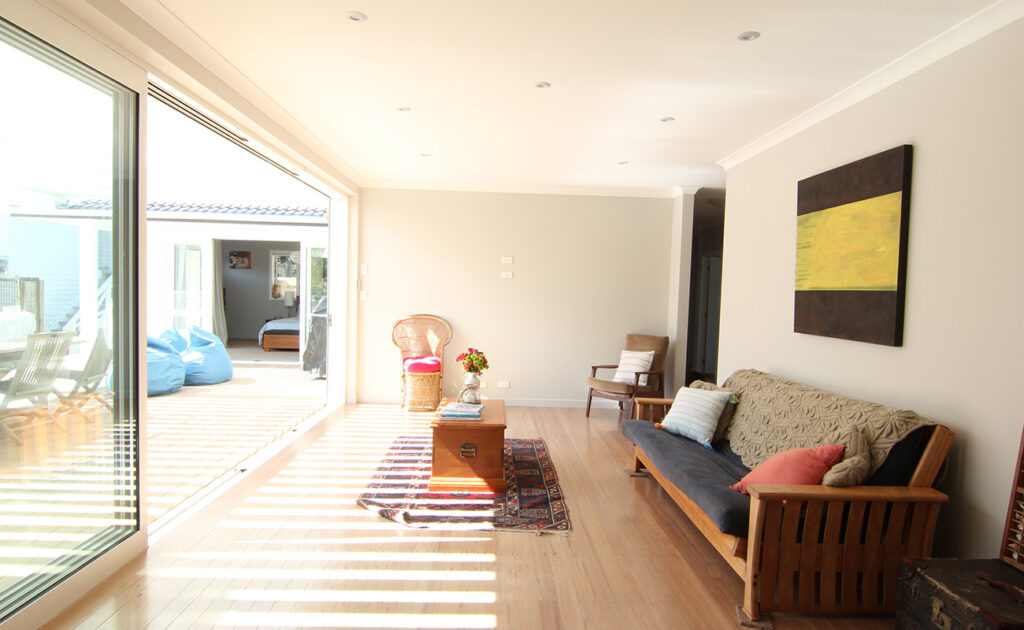
2. Doors and Windows: Opening Up the Space
The type of doors and windows you choose can have a significant impact on the flow between your indoor and outdoor spaces. Large sliding glass doors or bi-fold doors are ideal for creating a wide opening that allows for easy access and unobstructed views.
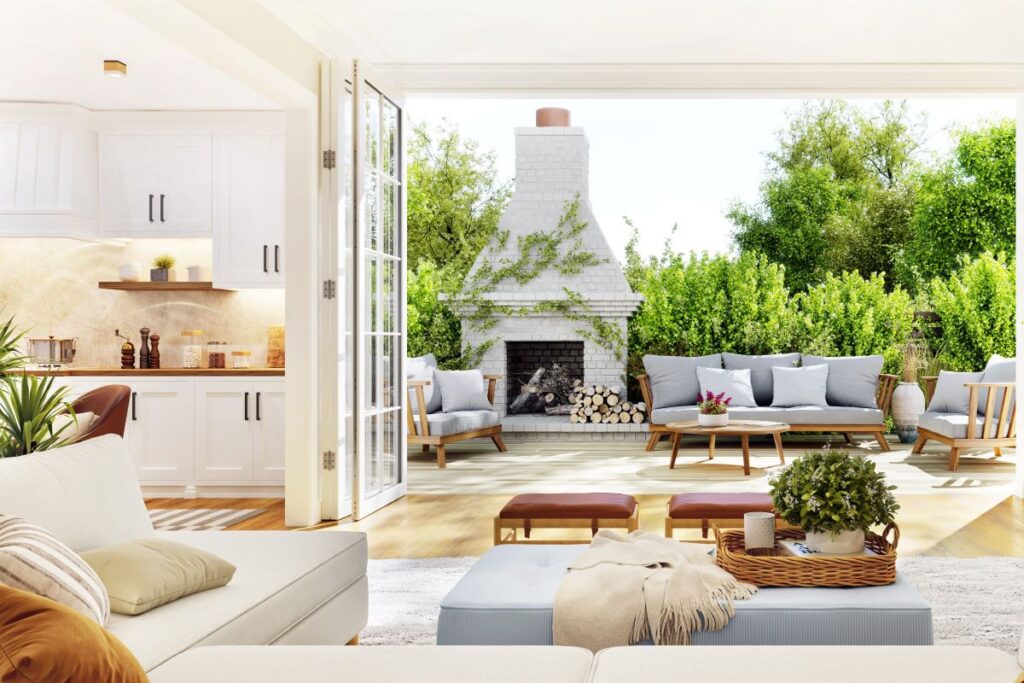
These types of doors can be completely opened up, effectively removing the wall between the two spaces. This creates a seamless transition and allows you to enjoy the fresh air and natural light.
If you don’t have the space or budget for large sliding or bi-fold doors, you can still create a good flow with French doors or a large picture window. Just make sure that the doors and windows are well-insulated and energy-efficient.
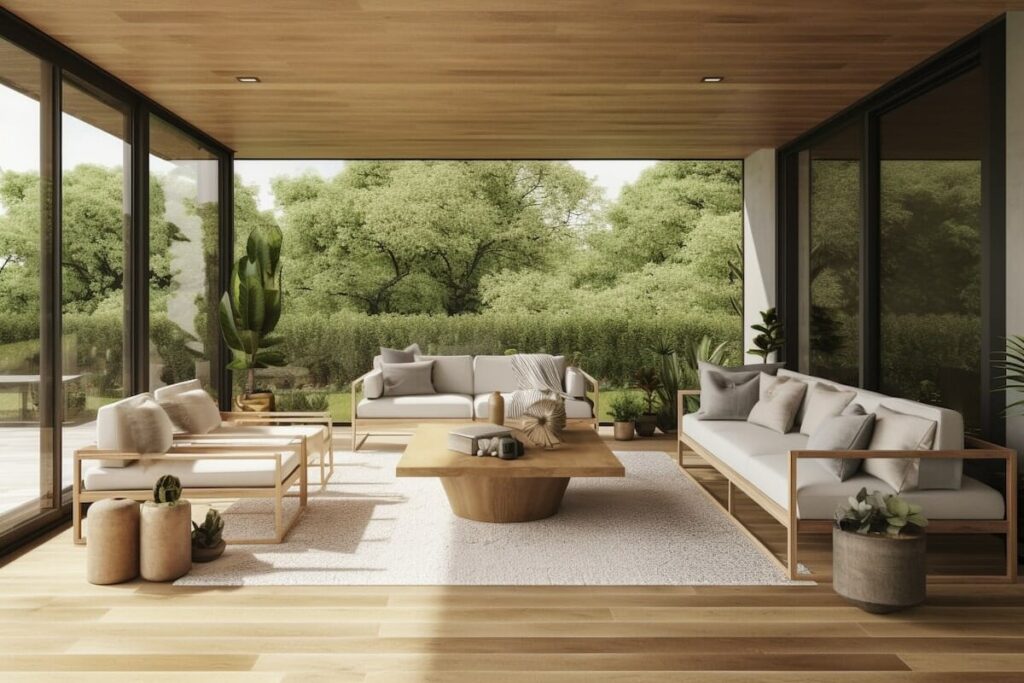
Consider adding screens to your doors and windows to keep out insects while still allowing for ventilation. You might also want to install blinds or curtains to provide privacy and control the amount of sunlight entering your space.
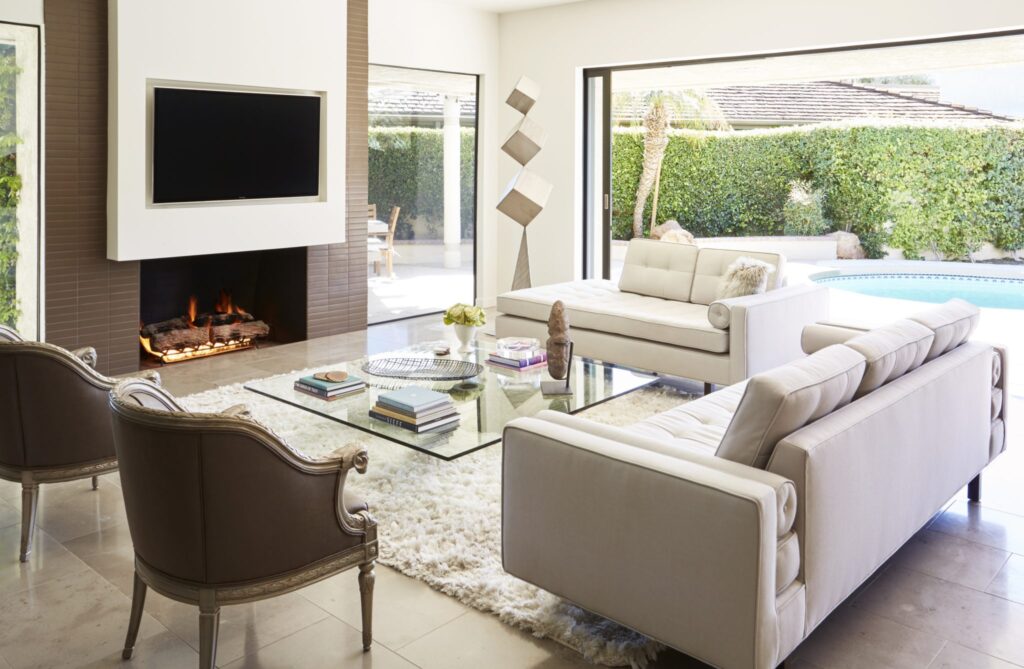
3. Color Palette: Creating Harmony
The color palette you choose should be consistent throughout your indoor and outdoor spaces. This helps to create a sense of harmony and unity, and prevents the two areas from feeling disjointed.

Choose colors that are inspired by nature, such as greens, blues, browns, and grays. These colors will create a calming and relaxing atmosphere and will blend seamlessly with your outdoor surroundings.
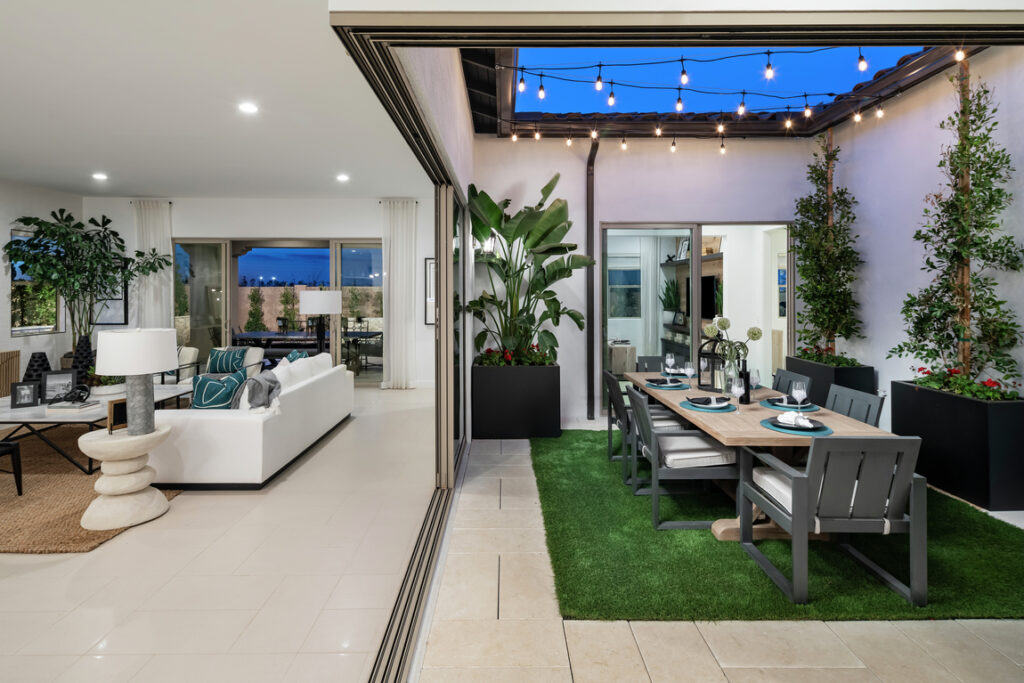
You can also use pops of color to add interest and personality to your space. Just be sure to use these colors sparingly and in a way that complements your overall color palette.
Consider the amount of sunlight your outdoor space receives when choosing your colors. Lighter colors will reflect sunlight and make the space feel brighter, while darker colors will absorb sunlight and make the space feel warmer.
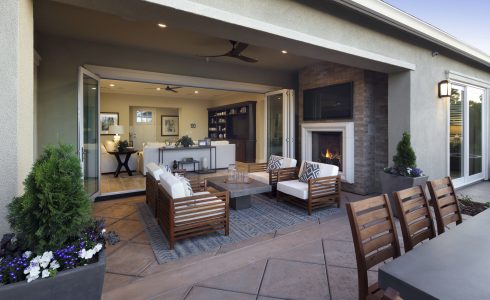
4. Furniture: Comfort and Style
Your outdoor furniture should be comfortable, stylish, and durable. Choose pieces that are designed for outdoor use and that can withstand the elements. Consider materials such as teak, wicker, aluminum, and wrought iron.
Choose furniture that complements your indoor furniture and that creates a cohesive look throughout your space. You might want to use similar fabrics and patterns indoors and outdoors.
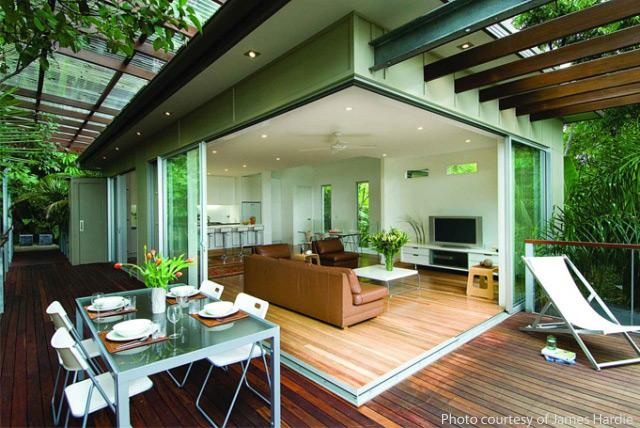
Consider the function of your outdoor space when choosing your furniture. If you plan on hosting outdoor dinners, you’ll need a dining table and chairs. If you plan on relaxing and lounging, you’ll need comfortable seating, such as sofas, armchairs, and chaise lounges.
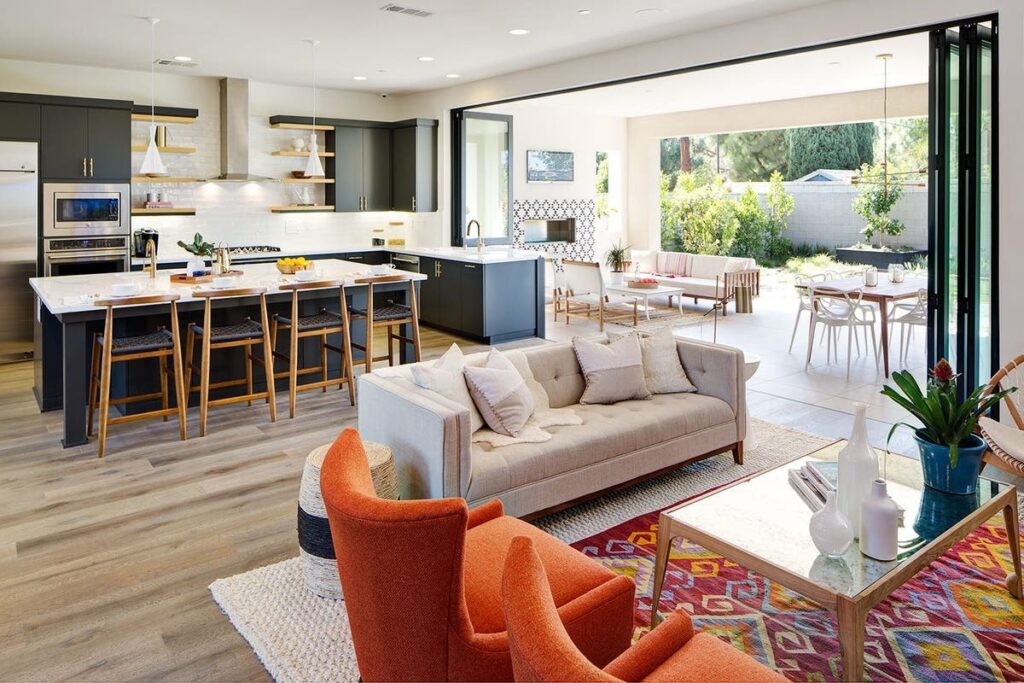
Don’t forget to add accessories, such as pillows, cushions, and throws, to make your outdoor space feel more comfortable and inviting. You might also want to add an outdoor rug to define the space and add a touch of style.
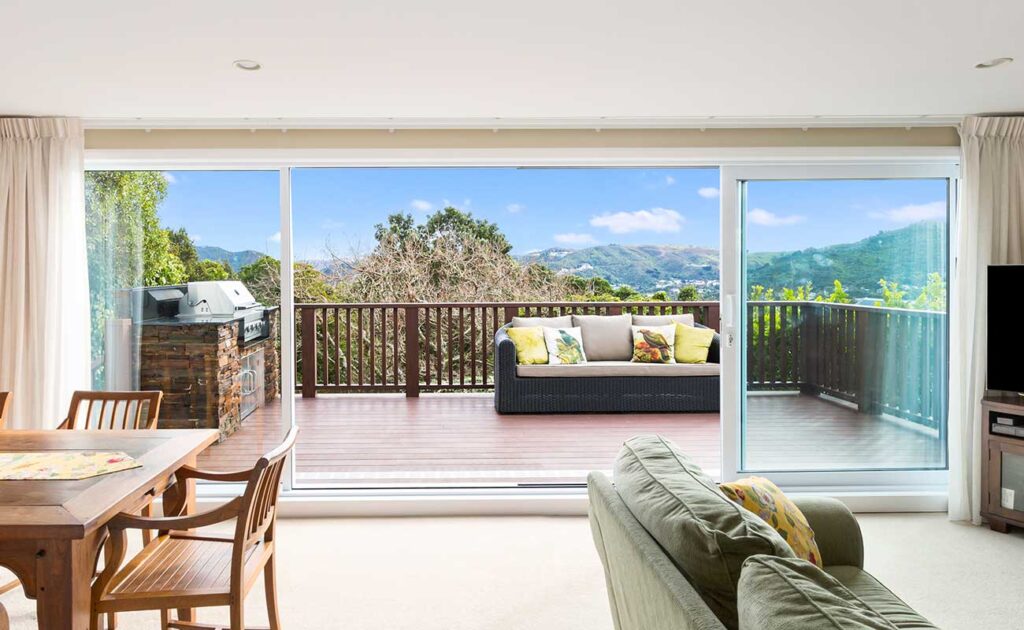
5. Lighting: Setting the Mood
Lighting is essential for creating a welcoming and inviting indoor-outdoor living room, especially after sunset. It’s important to consider both functional and ambient lighting to create the desired mood.
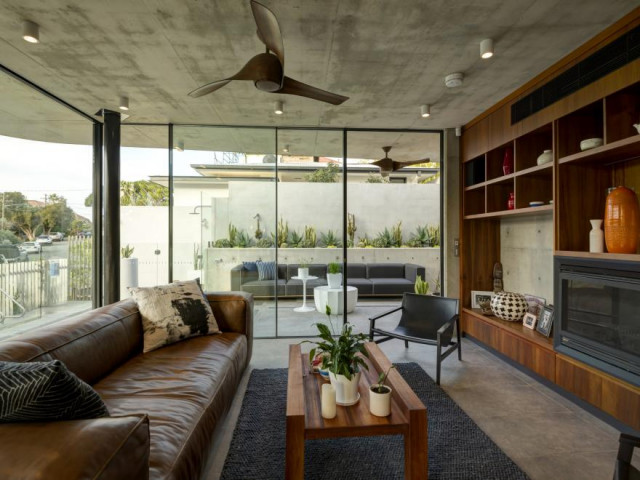
Functional lighting is necessary for safety and visibility. This includes pathway lighting, step lighting, and security lighting. Ambient lighting is used to create a relaxing and inviting atmosphere. This includes string lights, lanterns, and candles.
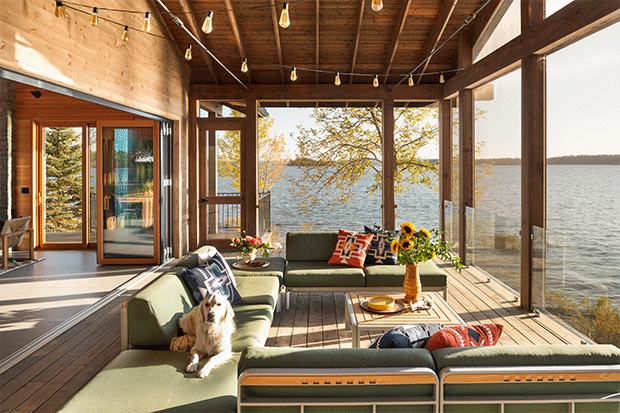
Consider using a combination of different types of lighting to create a layered effect. You might use recessed lighting to illuminate pathways, spotlights to highlight landscaping features, and string lights to create a festive atmosphere.
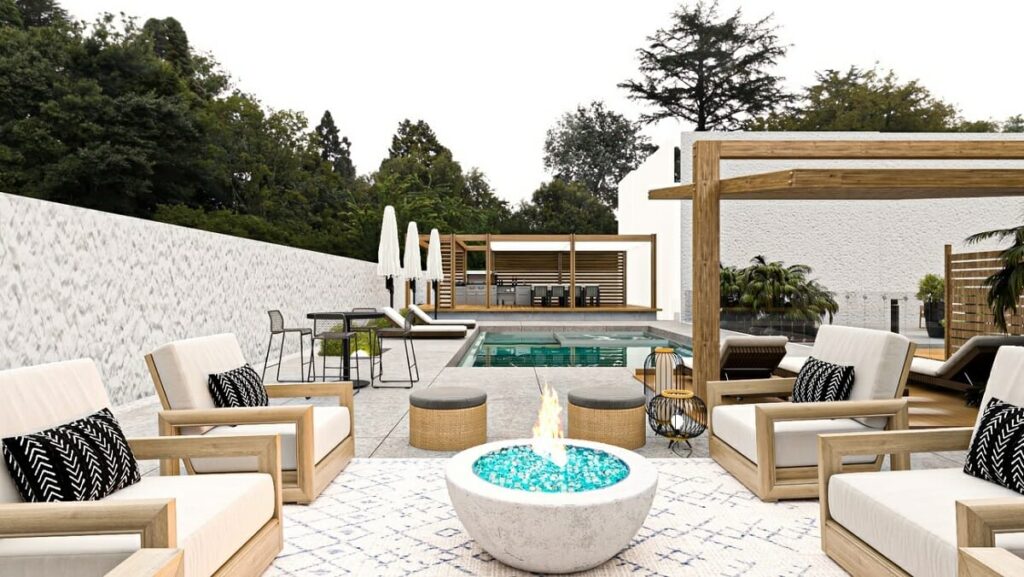
Choose energy-efficient lighting options, such as LED lights, to save money and reduce your environmental impact. You might also want to install a dimmer switch to control the intensity of your lighting.
6. Landscaping: Bringing Nature Closer
Landscaping is an integral part of creating a successful indoor-outdoor living room. Plants can add beauty, privacy, and shade to your outdoor space. They can also help to create a connection with nature and improve air quality.
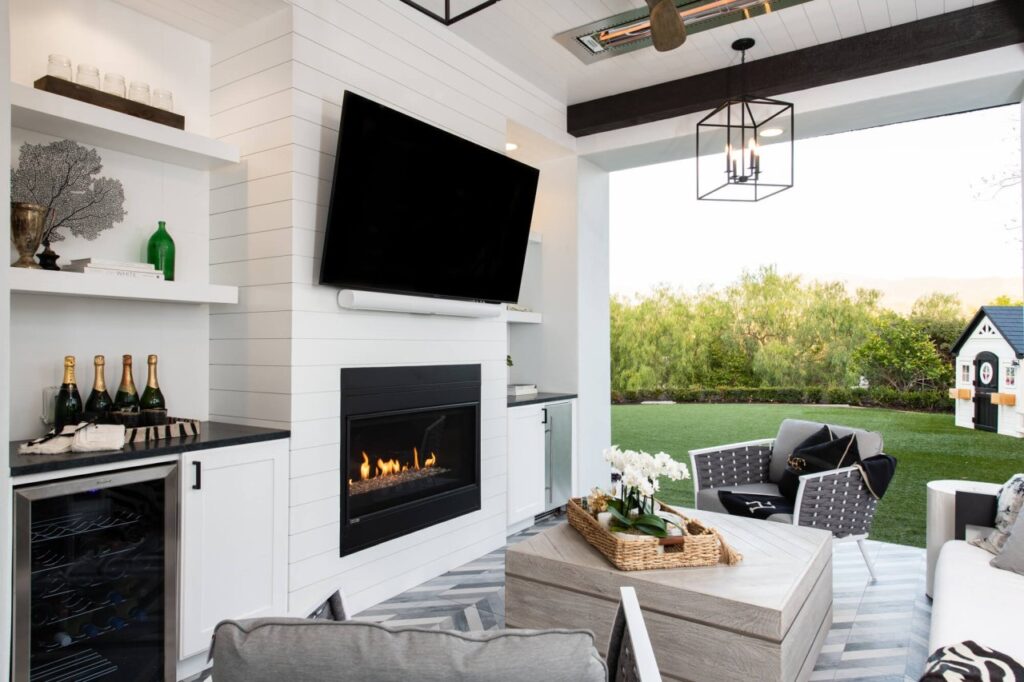
Choose plants that are well-suited to your climate and soil conditions. Consider the size and shape of the plants, as well as their color and texture. You might want to create a layered effect by planting a combination of trees, shrubs, and flowers.
Consider adding a water feature, such as a fountain or pond, to create a relaxing and tranquil atmosphere. You might also want to add a fire pit or fireplace to create a cozy and inviting space.
Don’t forget to add potted plants to your indoor space to create a visual connection with your outdoor landscaping. This will help to blur the lines between the two spaces and create a more seamless transition.
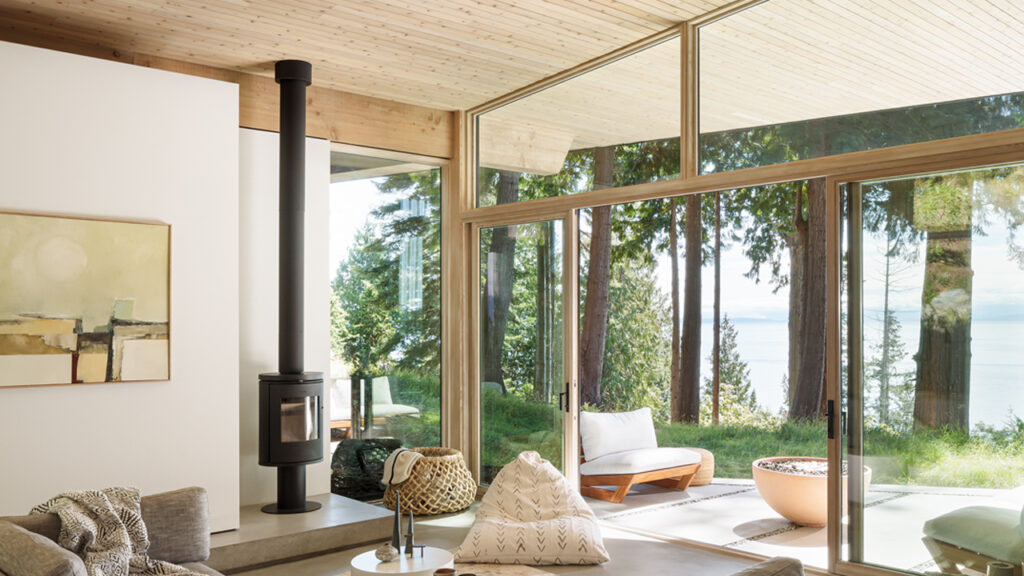
Maintaining Your Indoor-Outdoor Living Room
Once you’ve created your dream indoor-outdoor living room, it’s important to maintain it properly to keep it looking its best. This includes cleaning your furniture and flooring regularly, pruning your plants, and maintaining your lighting and water features.
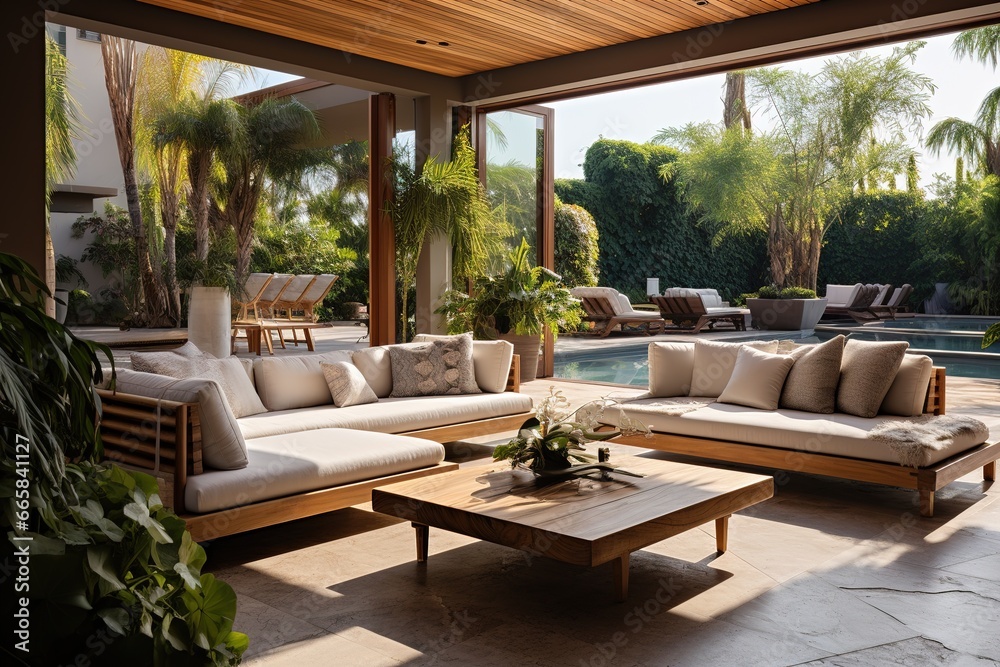
Clean your outdoor furniture regularly with soap and water. Use a brush or sponge to remove dirt and grime. You might also want to use a furniture protectant to prevent fading and damage from the sun.
Sweep or vacuum your outdoor flooring regularly to remove leaves, dirt, and debris. You might also want to power wash your flooring occasionally to remove stains and mildew.
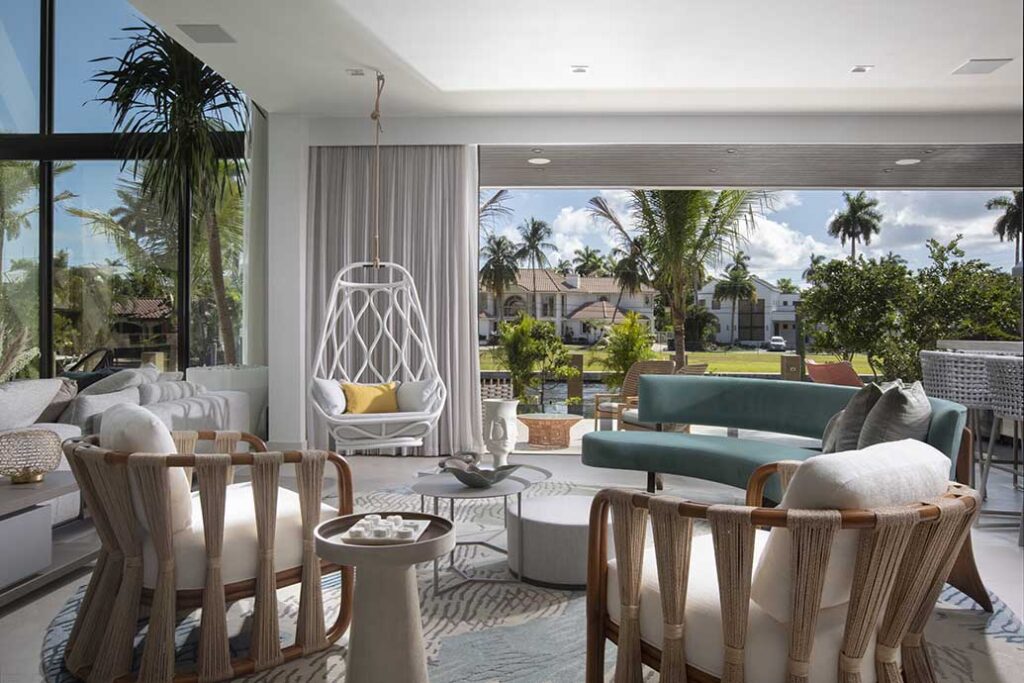
Prune your plants regularly to keep them healthy and looking their best. Remove dead or dying branches and flowers. You might also want to fertilize your plants occasionally to promote growth.
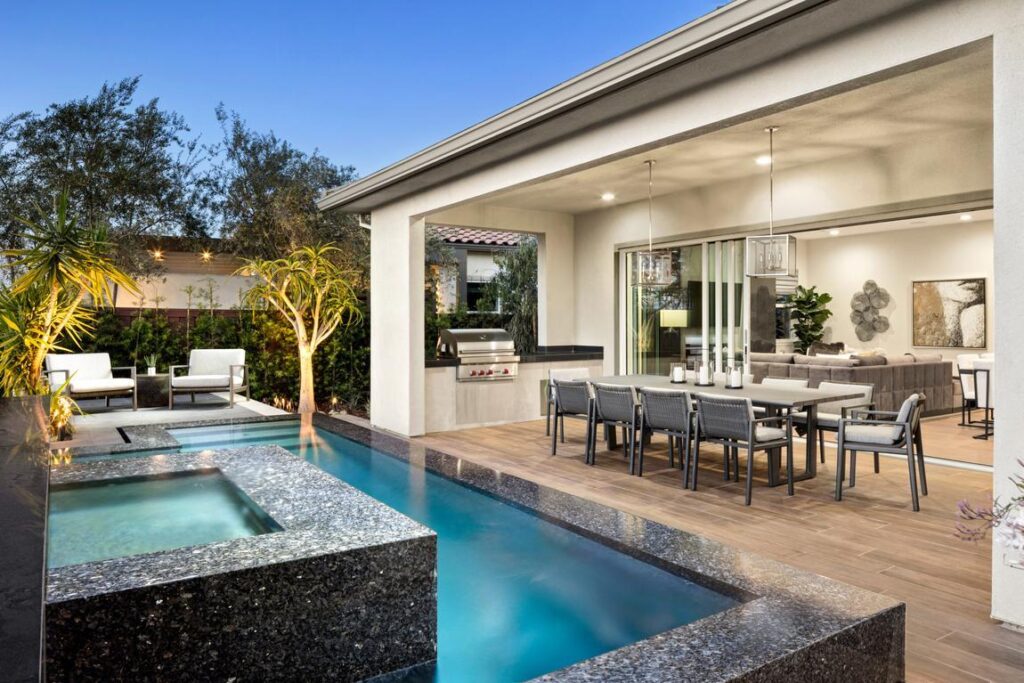
Clean your lighting fixtures regularly to remove dust and dirt. Replace any burnt-out bulbs. You might also want to check your wiring and connections to ensure that everything is working properly.
Clean your water features regularly to prevent algae growth. You might also want to add a water treatment to keep the water clean and clear.
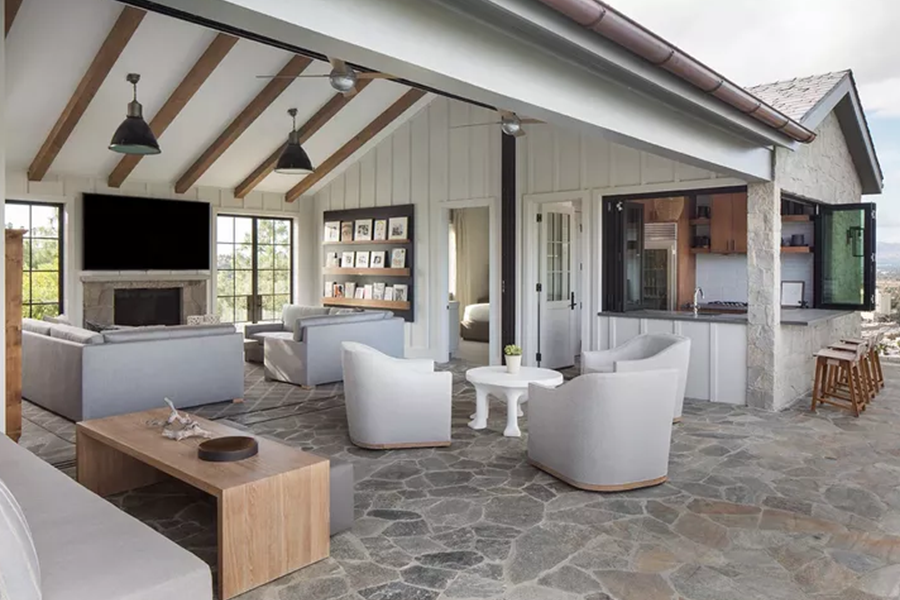
Indoor-Outdoor Living Room: A Worthwhile Investment
Creating a seamless indoor-outdoor living room flow is more than just a design trend; it’s an investment in your well-being and lifestyle. By blurring the lines between your interior space and the natural world, you can create a sanctuary where you can relax, entertain, and enjoy the beauty of your surroundings.
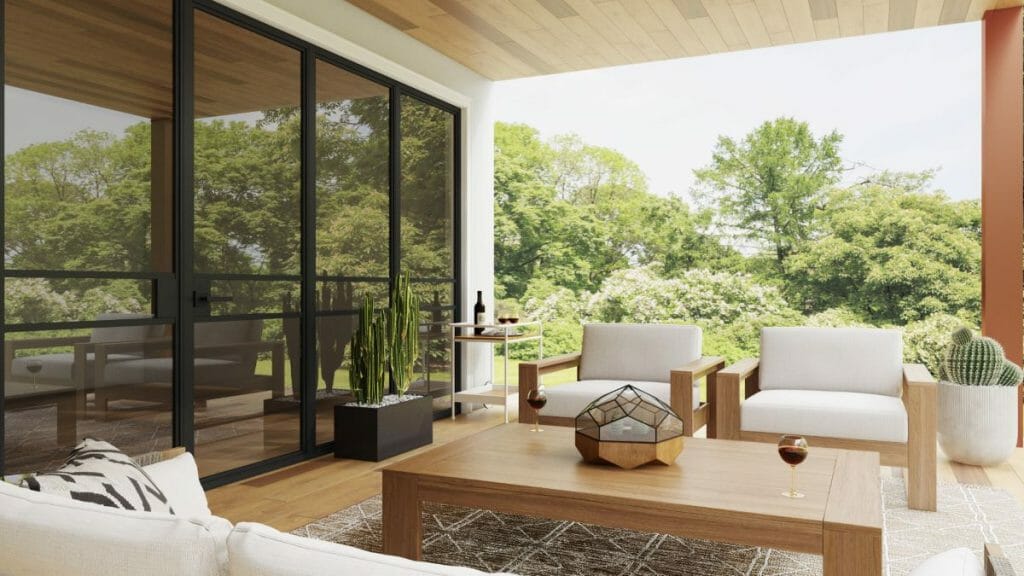
While the initial investment may seem significant, the long-term benefits are well worth it. An indoor-outdoor living room can increase the value of your home, provide a comfortable and inviting space for you and your family to enjoy, and foster a deeper connection with nature.
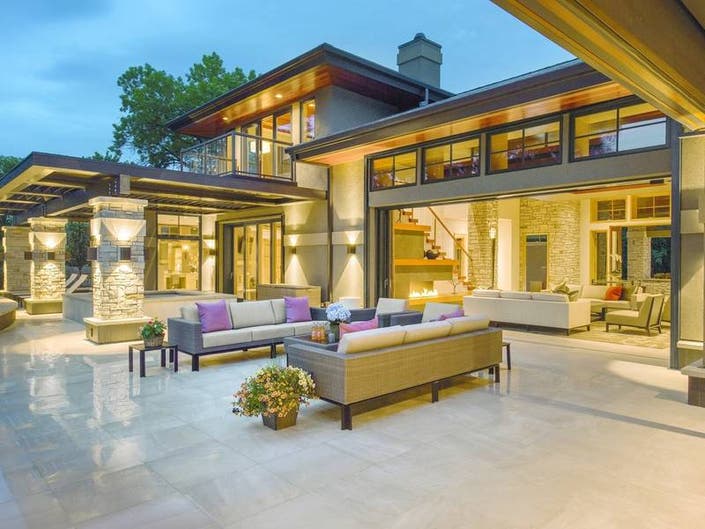
So, if you’re looking for a way to enhance your lifestyle and create a more harmonious living environment, consider designing a seamless indoor-outdoor living room flow. With careful planning and execution, you can create a space that is both beautiful and functional, and that will bring you joy for years to come.
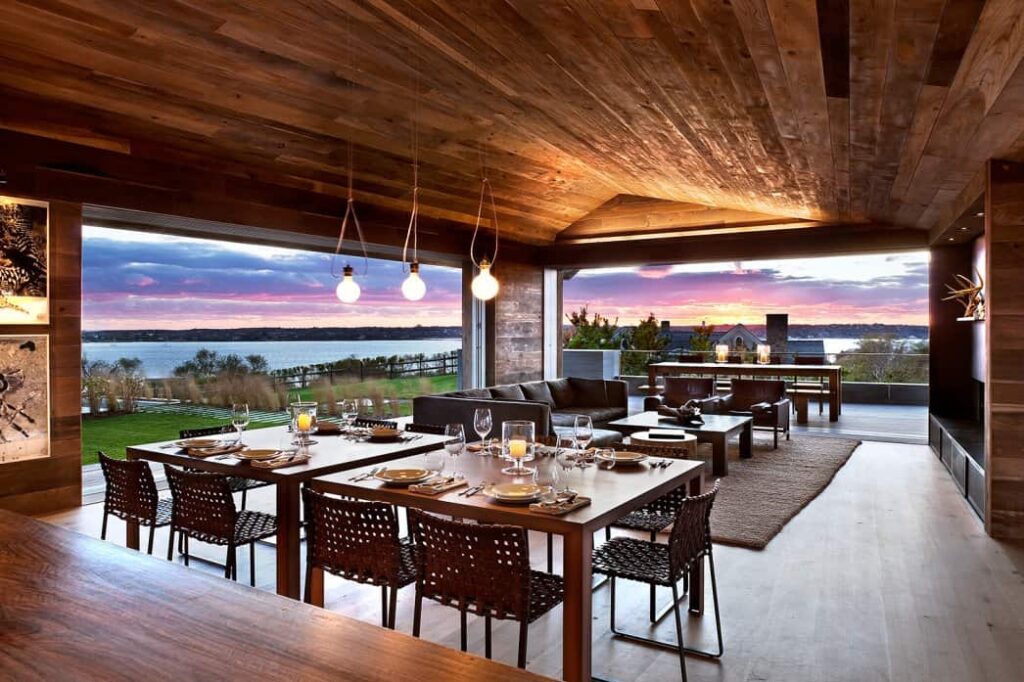
Embracing the Lifestyle: Tips for Maximizing Your Indoor-Outdoor Space
Now that you have your perfectly designed indoor-outdoor living room, here are some tips to truly embrace the lifestyle and get the most out of your space:
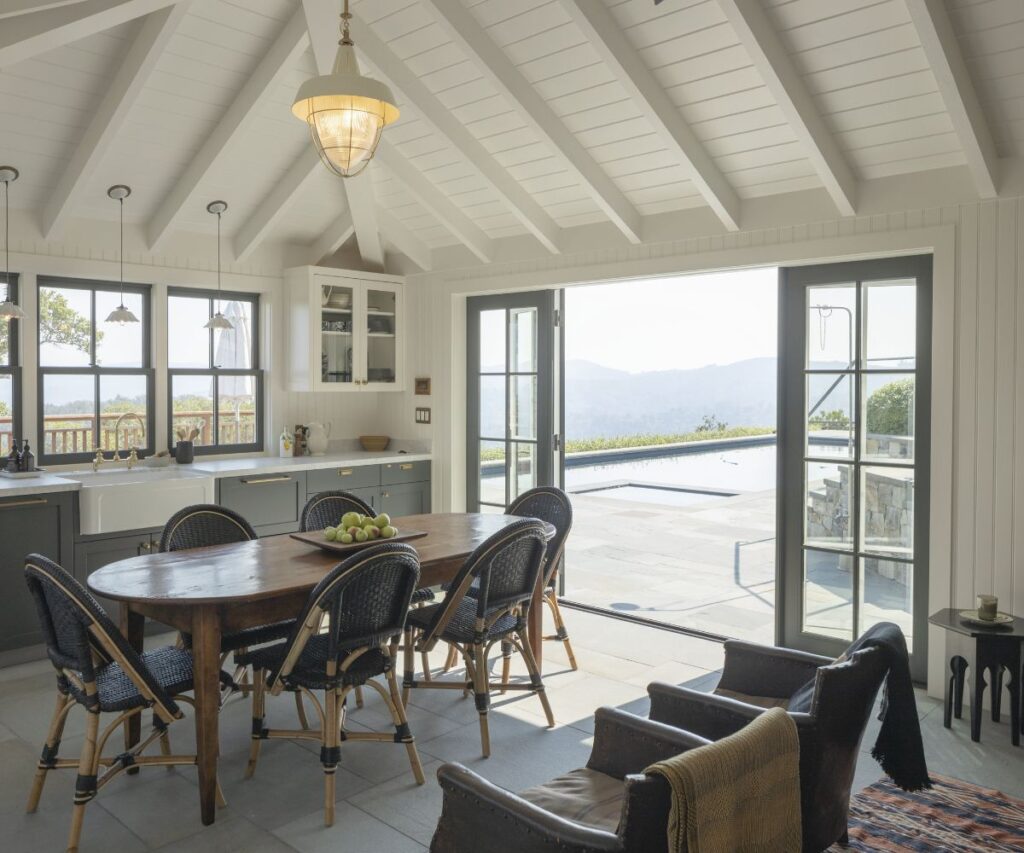
- Embrace the Seasons: Adapt your space to the changing seasons. Add cozy blankets and outdoor heaters in the fall and winter, and switch to lighter fabrics and cooling features in the spring and summer.
- Bring the Indoors Out: Don’t be afraid to bring indoor elements outdoors. Consider adding an outdoor TV, sound system, or even a mini-fridge to make your outdoor space more comfortable and convenient.
- Create a Designated Zone for Kids: If you have children, create a designated play area in your outdoor space with kid-friendly furniture and activities.
- Host Outdoor Gatherings: Take advantage of your indoor-outdoor flow by hosting outdoor parties, barbecues, and movie nights.
- Enjoy Quiet Moments Outdoors: Spend time relaxing and rejuvenating in your outdoor space. Read a book, meditate, or simply enjoy the fresh air and sunshine.
- Grow Your Own Food: Consider starting a small herb garden or vegetable garden in your outdoor space. This is a great way to connect with nature and enjoy fresh, homegrown produce.
- Maintain a Clean and Organized Space: Keep your indoor-outdoor living room clean and organized to create a welcoming and relaxing atmosphere.
Common Mistakes to Avoid When Designing an Indoor-Outdoor Living Room
Designing a seamless indoor-outdoor living room can be tricky, and it’s easy to make mistakes along the way. Here are some common pitfalls to avoid:
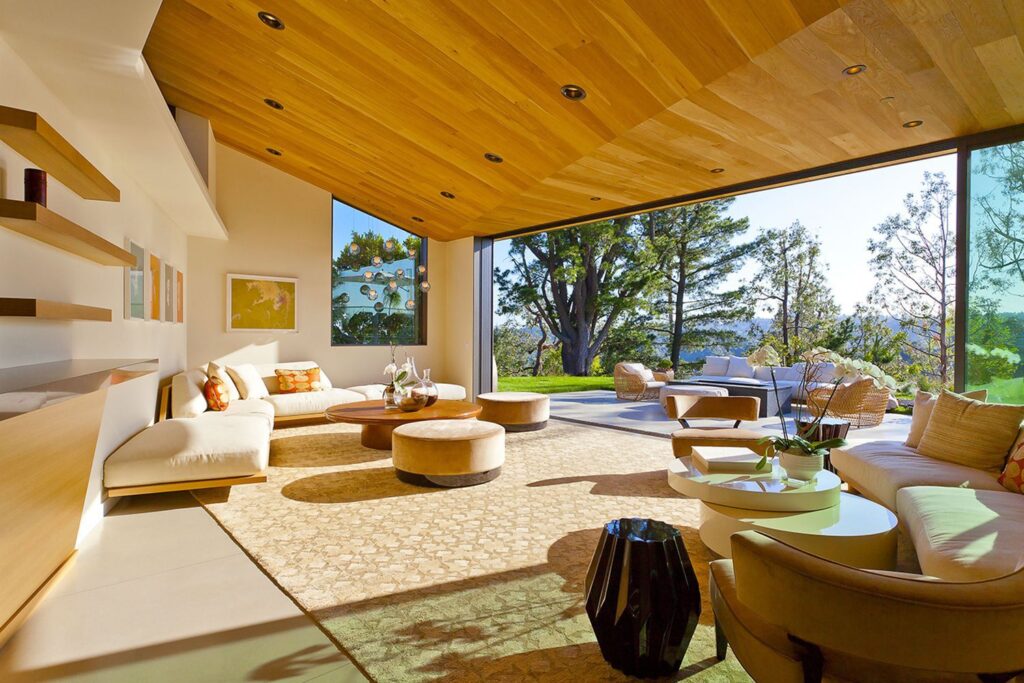
- Neglecting the Transition Zone: The transition zone between your indoor and outdoor spaces is crucial for creating a seamless flow. Don’t neglect this area by leaving it bare or uninviting.
- Choosing the Wrong Materials: Selecting materials that are not suitable for outdoor use can lead to damage and premature wear. Be sure to choose durable, weather-resistant materials for your outdoor space.
- Ignoring the Climate: Failing to consider the climate when designing your indoor-outdoor living room can result in an uncomfortable and unusable space.
- Poor Lighting: Insufficient or poorly placed lighting can make your outdoor space feel dark and uninviting.
- Lack of Privacy: If your outdoor space lacks privacy, you may not feel comfortable spending time there. Consider adding landscaping or privacy screens to create a more secluded atmosphere.
- Overcrowding the Space: Cramming too much furniture and decor into your outdoor space can make it feel cluttered and overwhelming.
- Ignoring the Existing Architecture: Failing to integrate your indoor-outdoor design with the existing architecture of your home can result in a disjointed and unattractive space.
The Future of Indoor-Outdoor Living
As our lives become increasingly busy and technology-driven, the desire to reconnect with nature will only continue to grow. The trend of indoor-outdoor living is likely to become even more popular in the years to come, with innovative new products and designs that further blur the lines between our interior and exterior spaces.
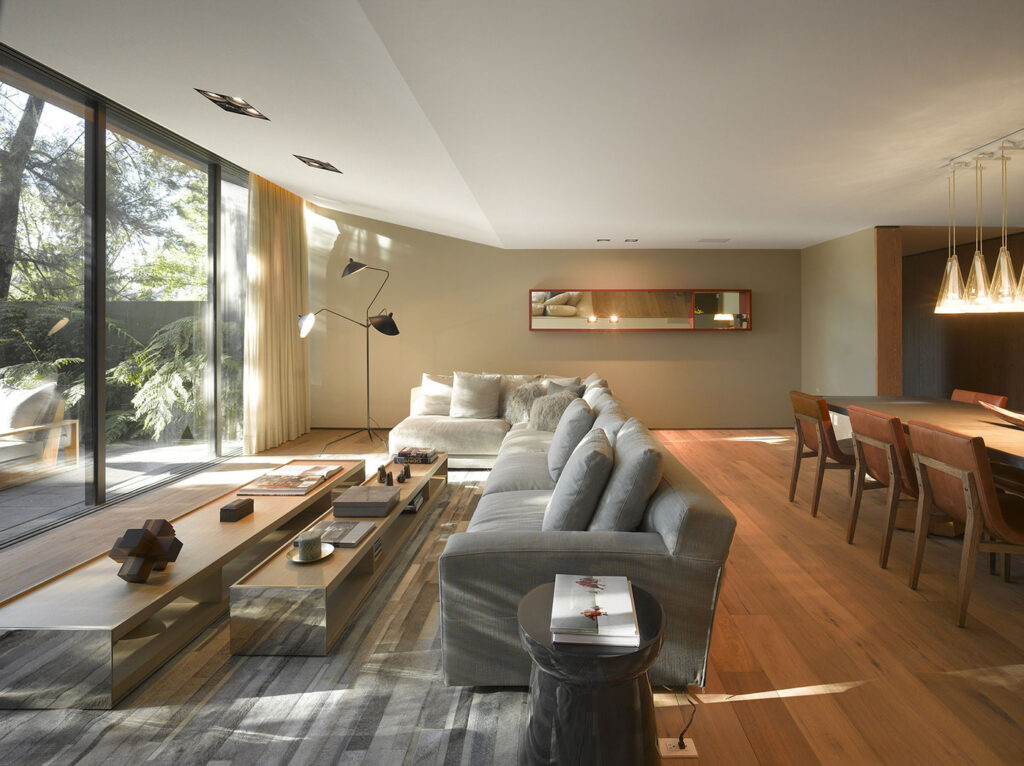
We can expect to see more homes incorporating features such as retractable walls, integrated smart home technology, and sustainable building materials to create truly seamless and eco-friendly indoor-outdoor living environments. The future of home design is all about creating spaces that are not only beautiful and functional but also promote well-being and a deeper connection with the natural world.
 Nimila
Nimila
